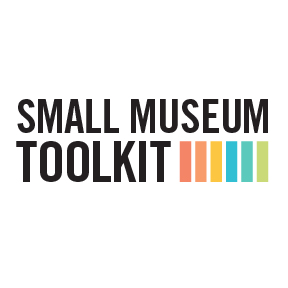When it
comes to legal issues for museums, ignorance is definitely not bliss. Instead,
forewarned is forearmed. Make it a regular activity to research and seek advice
before you deal with any legal issue. Along with learning how the law will
impact your museum, policies and ethics are good prophylactics.
Disclaimer: The author is not an authority on the law, and this blog post is not a
substitute for legal advice. Whenever you deal with legal issues, it is
imperative that competent legal counsel be sought. In seeking out legal
counsel, remember that many areas of museum law are specialty areas, from
copyright and licensing to tax-exempt status and accessibility. An attorney who
practices personal injury or bankruptcy law, for example, may not have the background
or experience to deal with many museum concerns.
The chapter
in the Small Museum Toolkit on
museums and the law provides a brief introduction to many legal issue and then
guides you to resources for finding more information and legal rulings.
Let's take
unrelated business income tax as an example.
The IRS
mandates that income produced at exempt organizations from “regularly conducted
activities,” such as those conducted by museum stores and restaurants (as
opposed to one-time or occasional activities such as fundraising events), be
related to the organization’s exempt purpose or else become subject to the
unrelated business income tax (UBIT). UBIT was established to protect nonexempt
businesses from unfair competition. If a “substantial” percentage of a museum’s
income comes from unrelated activities, it risks losing its tax-exempt status.
And even if, for example, some museum store merchandise is substantially
related to the museum’s mission, the IRS’s so-called fragmentation rule means
that other merchandise that is not so related can be separated out for
taxation.(1) Although the IRS has not ruled on the definition of “substantial,”
“as a general rule . . . if unrelated income regularly falls within the range
of 15–30% of museum revenues, you may wish to establish a for-profit
subsidiary.”(2)
While more
details about UBIT regulations are available on the IRS website,(3) a few
rulings on UBIT regarding museum stores may be informative. Low-cost items
(e.g., T-shirts, magnets) are not taxable if they promote the museum or provide
an educational message.(4) The sale of note cards or postcards featuring images
of museum collections has been deemed to be within the law.(5) “Merely affixing
the museum’s name to an object [however] did not establish the requisite causal
relationship with the museum’s exempt purpose. It makes no difference that many
of the articles containing the name or logo are inexpensive souvenirs or
trinkets.”(6)
There are
some general rules about buying and producing merchandise to sell in a museum
store with respect to UBIT. First, each sale item will be individually
considered for UBIT by the IRS. Thus, “it can be helpful to consult curators
and educators to evaluate which goods are related to the museum’s purposes and
which are not.”(7) Merchandise featuring the reproduction of some- thing in the
museum collections is less likely to fall under UBIT. Second, adding an
accompanying small card or hang tag with educational information about the item
(e.g., information about the artist, historical information about the craft,
how the item relates to local history) increases the educational value and thus
helps negate UBIT. Third, you can sell unrelated merchandise, but you will have
to keep track of these sales in order to pay UBIT.(8)
Museum stores have great potential to support your museum's education mission and provide some earned income. This introduction to UBIT should help you to consider what legal ramifications having a store might mean for your museum.
Allyn Lord is the director of the Shiloh Museum of Ozark
History in Springdale, Arkansas. Since 1982 she has served on the AAM board;
been an accreditation, Museum Assessment Program (MAP), and Institute of Museum
and Library Services (IMLS) grant reviewer; and worked on numerous committees,
including those serving small museums with both AAM and AASLH. She has also
been active in the Arkansas Museums Association and Southeastern Museums
Conference. She believes in the power of networking, professional development,
mentoring, and service to the field.
Notes:
(1) “Museum
Retailing—UBIT Issues,” Internal Revenue Service, www.irs.gov/pub/irs-tege/eotopicu79.pdf.
(2) Jeffrey
Hurwit, “The Entrepreneurial Museum: Some Legal, Tax, and Practical
Perspectives,” Hurwit & Associates,
www.hurwitassociates.com/l_entrepreneur_ museum.php.
(3)
“Unrelated Trade or Business,” Internal Revenue Service,www.irs.gov/publications/p598/ch03.html.
(4) Hurwit,
“Nonprofit Governance.”
(5) Jim
Bloom, “IRS Refines Its Position on Museum UBIT Sales of Inventory,” Free
Library, April 1996, http://www.thefreelibrary.com/IRS+refines+its+position+on+museum+UBIT+sales+of+inventory.-a018202846.
(6) Bloom,
“IRS Refines Its Position.”
(7) Laura
Damerville, “BIT Focus: Museum Store Products,” Art Law Clinic Client
Newsletter 1, no. 1 (fall 2005),
www.law.harvard.edu/academics/clinical/lsc/pdf/Art%20Law%20Clinic%20Newsletter1.pdf.
(8)
Damerville, “BIT Focus.”
